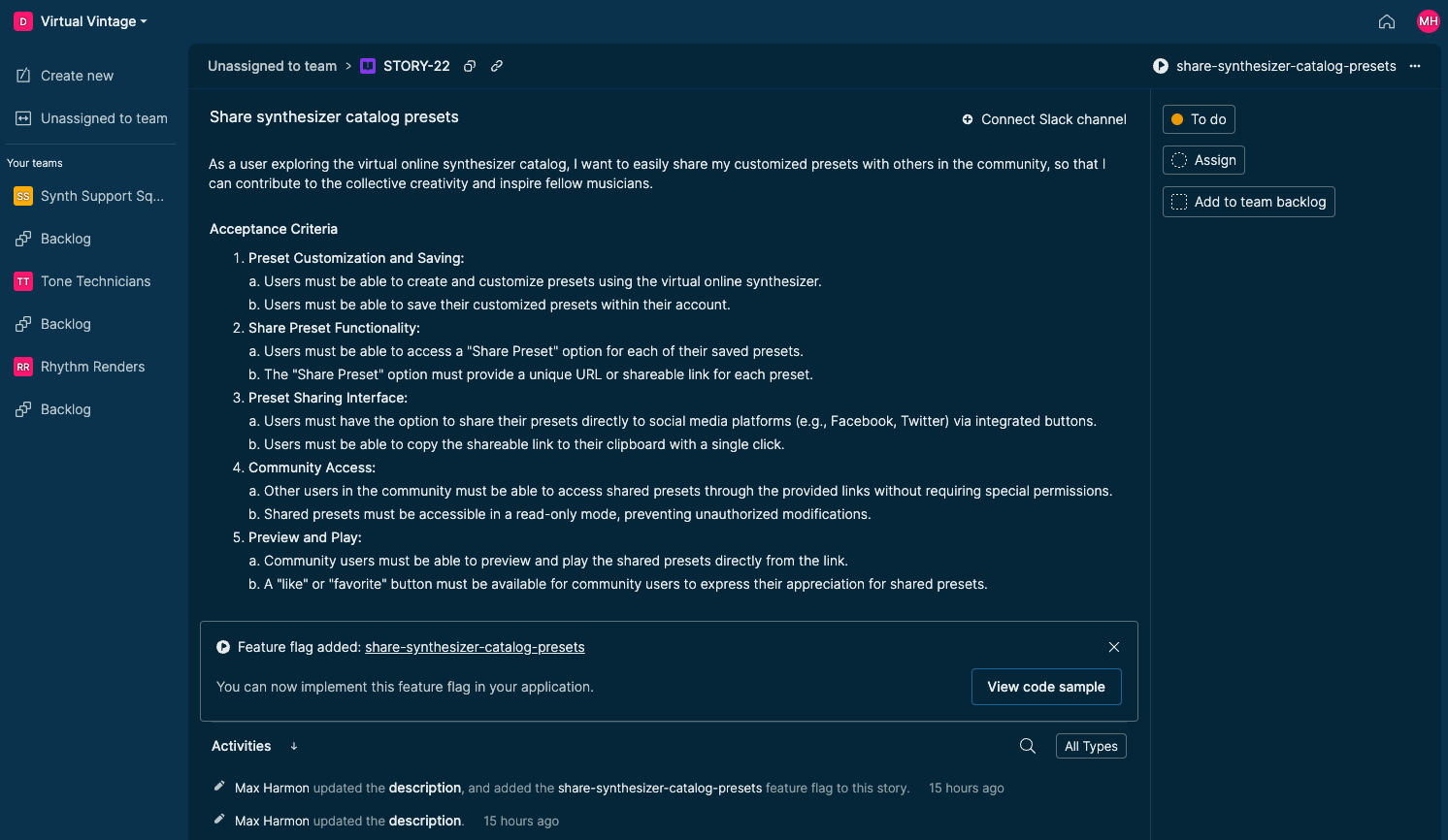Stories
Most systems treat stories as just another task in a long list of issues—they look and feel like bugs, security vulnerabilities, or architectural improvements. This generic approach misses the opportunity to provide a great user experience for story authors and implementers, and often contributes to task burnout.
Stories are the fundamental unit of software delivery, representing real customer needs, desired functionality, and business value. We believe they should be treated as first-class objects, providing a richer and more purposeful experience.
Introducing: Atono stories
Our Stories MVP provides the framework for specifying, designing, implementing, and testing stories. It enables you to create user stories, define acceptance criteria, prioritize and move stories through a workflow, and maintain a detailed history of all activities.

Key features include:
- Guided user story writing: Craft user stories intuitively with the prompt, “As a {persona}, I want to {perform an action}, so that {rationale},” ensuring each story is complete and focused.

- Reusable personas: Save time and maintain consistency by reusing previously created personas, or easily add new ones as needed.

- Persistent acceptance criteria references: Since stories are first-class objects, it’s crucial that ACs remain intact. Keep copied links to ACs preserved through text edits, reordering, and nesting changes.

- Built-in feature flagging: Directly link feature flags to stories, with integrated documentation and code snippets for easy implementation.

What’s next?
We envision a longer life cycle for user stories than what’s typically seen in other issue tracking systems. By extending their life cycle, we aim to enhance their impact across the entire development process.
Future enhancements seek to:
- Track real customer usage: After a story is deployed and flagged on, tracking customer usage provides valuable insights for evaluating product decisions and guiding future development.
- Serve as reference points: User stories are essential during production incidents, offering critical design details and rationales for future developers who may not have been part of the original team.
- Save time and avoid mistakes: Easy access to information saves time and helps avoid costly mistakes by providing the full context of the system.
